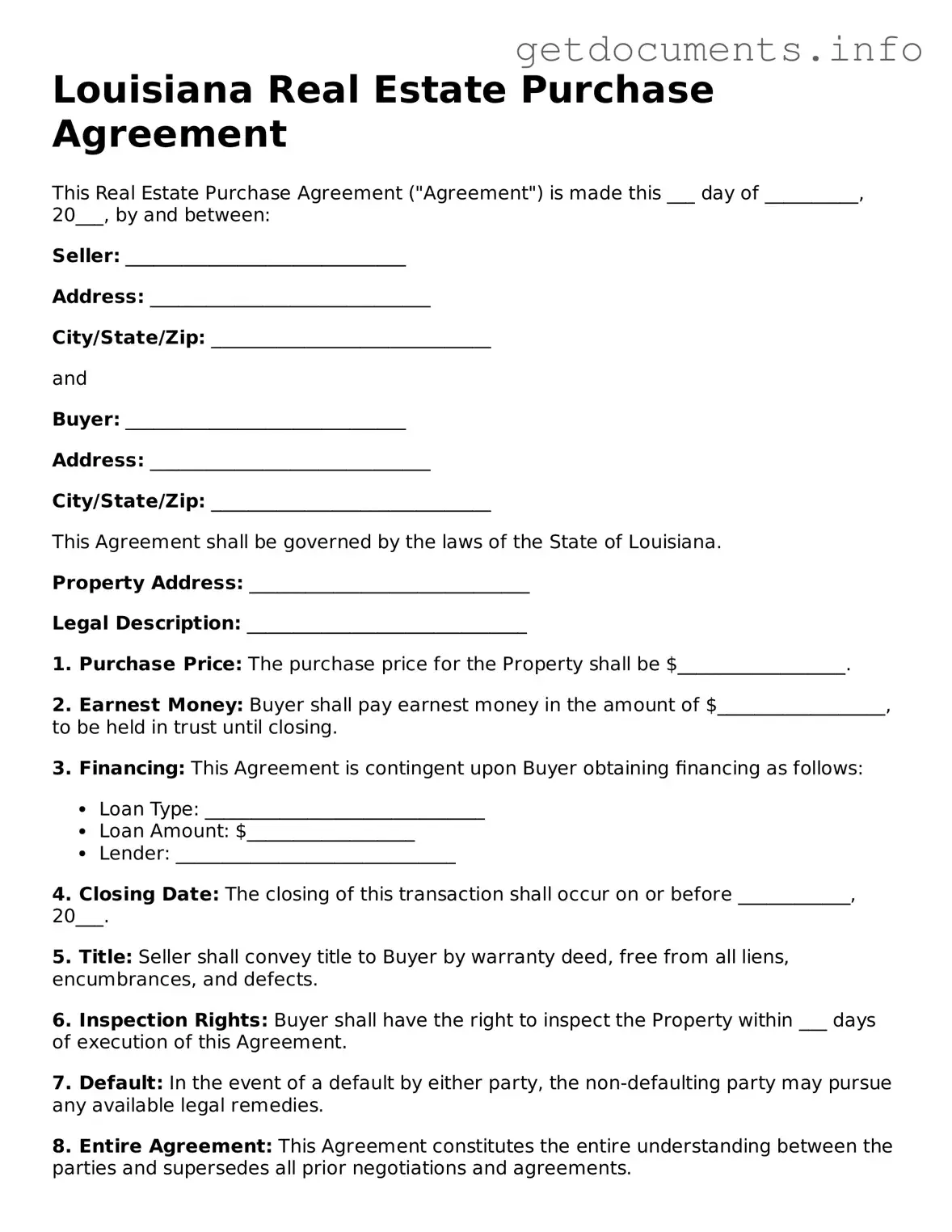Free Real Estate Purchase Agreement Template for Louisiana
The Louisiana Real Estate Purchase Agreement is a legally binding document that outlines the terms and conditions of a real estate transaction in Louisiana. This form serves as a crucial tool for buyers and sellers, ensuring that both parties understand their rights and obligations. For those ready to proceed with a property transaction, filling out this form is an essential step—click the button below to get started.
Access Real Estate Purchase Agreement Editor
